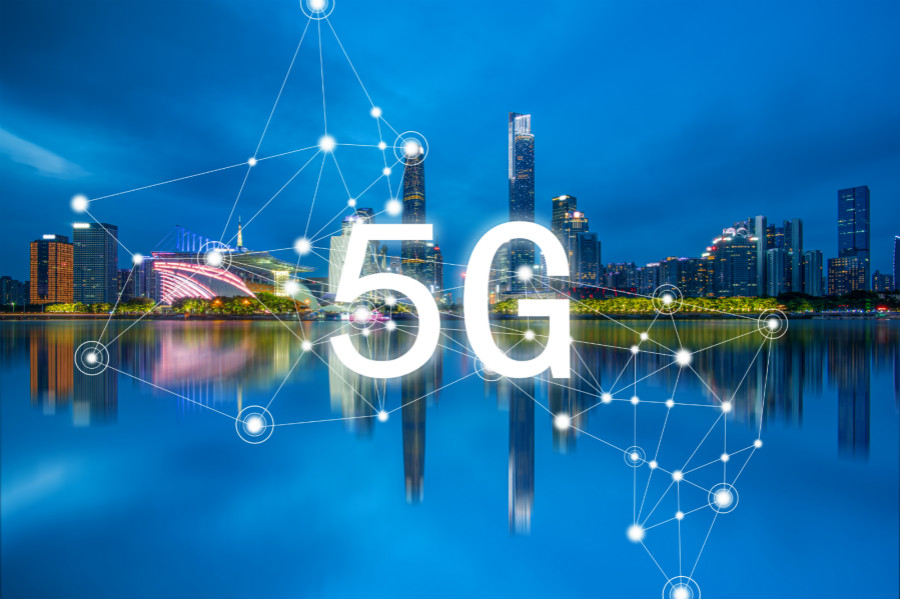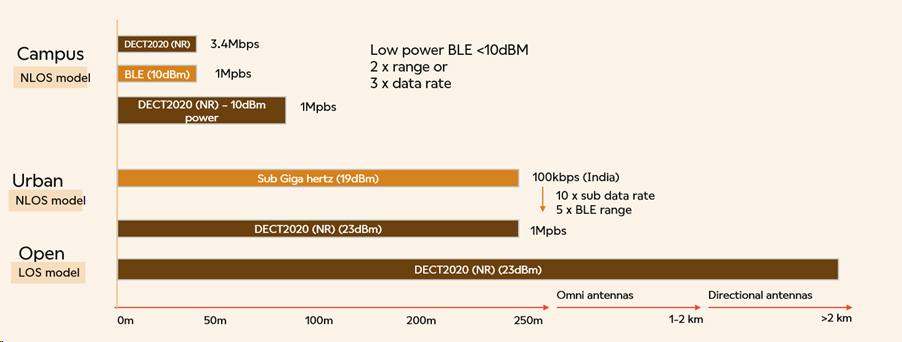What is 5G IoT?


What is non-cellular 5G?
I think most readers are familiar with the cellular generation acronyms 2G, 3G, 4G, and 5G. These mark the generations of cellular technology defined by the cellular community and approved by ITU-R as part of each generation. Cellular technology in the 2G-5G era is primarily an evolution of mobile phone-driven use case requirements.
The Internet of Things is considered a new growth opportunity, so the ITU-R defines the requirements to meet the 5G series of standards in this area. More specifically, it is required to support 1 million IoT nodes within a square kilometer. ETSI DECT2020 NR – Wireless mesh networking approach does meet these criteria easily. As a result, the ITU-R approved the first non-cellular technology to be included in 5G - ETSI DECT2020 NR.
When discussing 5G, some may expect full interoperability between cellular and non-cellular technologies. It is critical to understand that 2G, 3G, 4G and 5G are also not interoperable on the radio interface. With every major step forward, compatibility is sacrificed for significant impact. The backend supports different cellular radio access generations, and these different generations are implemented in the same mobile phone handset. Interoperability is achieved through the use of previous generations as fallbacks in cellular operator backends and handheld devices.
Likewise, the first non-cellular 5G is a major disruption. Cellular and non-cellular 5G radio interfaces are not interoperable. Instead, they can all be implemented in the same unit, with data relayed at the application layer from one network to another and/or combined at the backend. For example, when data is collected to the backend over cellular 5G and non-cellular 5G radio networks. Another example of common use is when non-cellular 5G traffic is routed from the gateway to the backend over the 5G cellular network.
The ITU-R has made a major decision to include this disruptive wireless mesh networking technology as part of 5G. It is important to understand that each technology in the 5G family has a clear role and benefit. These technologies are not interoperable at the radio access layer. They support different use cases. Having the wireless mesh part of 5G is the biggest new differentiator in 5G...in my opinion.
Why choose non-cellular 5G IoT?
While it is entirely possible to connect IoT devices and relay data over a limited range via a mobile operator's 5G cellular data connection, non-cellular 5G offers many new opportunities such as massive capacity, flexible coverage and node density. Cellular 5G faces challenges in the IoT space. Jussi Numminen discusses this more extensively - see blog: Wirepas. In a nutshell, cellular-based IoT solutions already present the following challenges:
- Cellular 5G requires a lot of infrastructure, tower sites and antennas, physical SIM cards and equipment.
- A subscription is required to operate, and cellular 5G is built for both cellphone and consumer use cases.
Non-cellular 5G IoT is a wireless mesh network where each added IoT node expands the network. It is even conceivable that each node is a "local base station". These nodes are making independent decisions to either join the mesh network or expand the network by routing traffic from other nodes. This eliminates the need for network planning and the need for a party to manage the network.
The last point I want to add here is data ownership. When cellular carriers build the infrastructure and operate the network, that means you have to trust all of your data to pass within the carrier's network. This can be avoided with non-cellular 5G. Mesh networks are self-governing, you own and control who can access your data. There is no middleman in between. While this does not apply to all use cases, there are more and more cases where data is sensitive and needs to be kept in closed private data networks and "don't leave the building". The recent global crisis has put more emphasis on this type of consideration at strategic sensor locations such as power stations.
5G IoT Radio
The radio technology used for 5G IoT (DECT2020 NR) is mesh radio, which I think is the only mesh network in the field with modern radio link technology! In my past work experience in the wireless field, I have seen that similar steps have been taken to modernize radio link technology in the cellular and Wi-Fi space. It's time to take wireless mesh radio technology to the same level. While Bluetooth and sub-gigahertz technologies primarily operate on the cellular equivalent of 2G, 5G IoT is built using technologies already employed by 4G and 5G cellular. Non-cellular 5G employs innovations proven in the cellular (and Wi-Fi) space, such as OFDM (Orthogonal Frequency Division Modulation) and HARQ (Hybrid Automatic Repeat Request).
So what is the impact of adopting these latest technologies? The figure below shows a quick overview of 5G IoT radio performance for sub-gigahertz and 2.4 Bluetooth radios. In short, 5G IoT radios combine the best features of sub-gigahertz and Bluetooth radios. 5G IoT radios can reach comparable sub-gigahertz distances at 10 times the data rate. With adaptive modulation and coding, you can enjoy twice the range at the same data rate compared to 2.4GHz, or three times the range at the same data rate as 2.4GHz! With the ability to dynamically adjust data rate and transmit power, link performance can be increased to reduce power consumption when the full data rate or link distance is not required.

A final advantage over other existing mesh services is the technology-specific frequency bands for DECT2020 NR. The frequency of the specific technology provides the best operating capability and our system can operate without duty cycle limitations. Additionally, as demand increases and chipsets evolve, the approval of 5G enables a wider range of frequencies that can be used.
Summarize
All in all, I predict that 5G IoT will be driven and ultimately defined by new non-cellular 5G segments, rather than incremental improvements in cellular. Non-cellular 5G is a new, disruptive and powerful wireless mesh networking solution based on the ETSI DECT2020 NR standard. This will enable entirely new use cases and enable more nodes to connect far beyond the capabilities of cellular technology.
The 5G label means it is part of the global 5G family and has been proven by the industry community to meet an agreed set of requirements for high-density IoT devices. It has a dedicated frequency band and can operate without duty cycle limitations and interference. Non-cellular 5G IoT offers new opportunities to manage your own data economically. Mesh technology enables each node to become a base station for extended coverage.